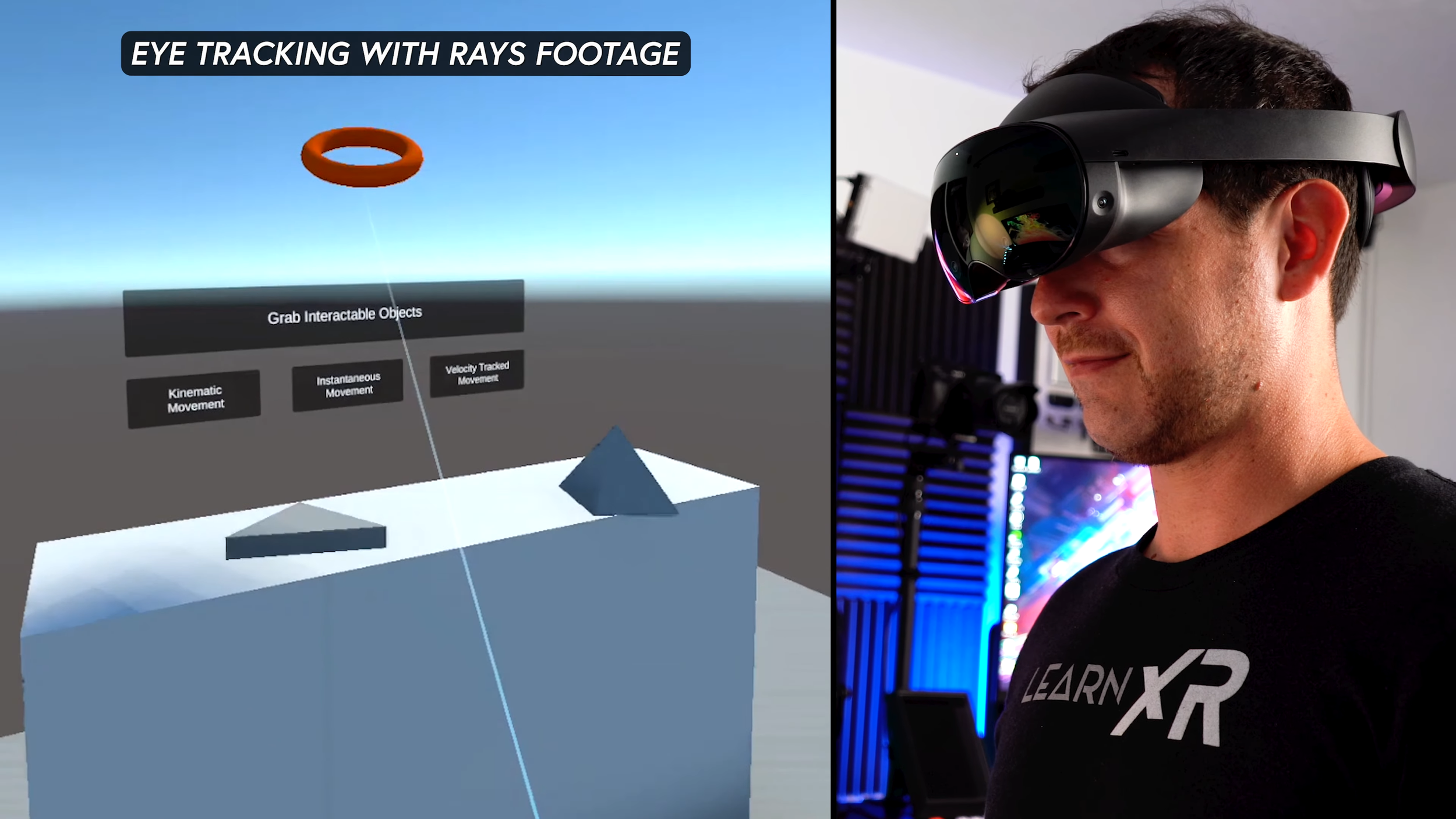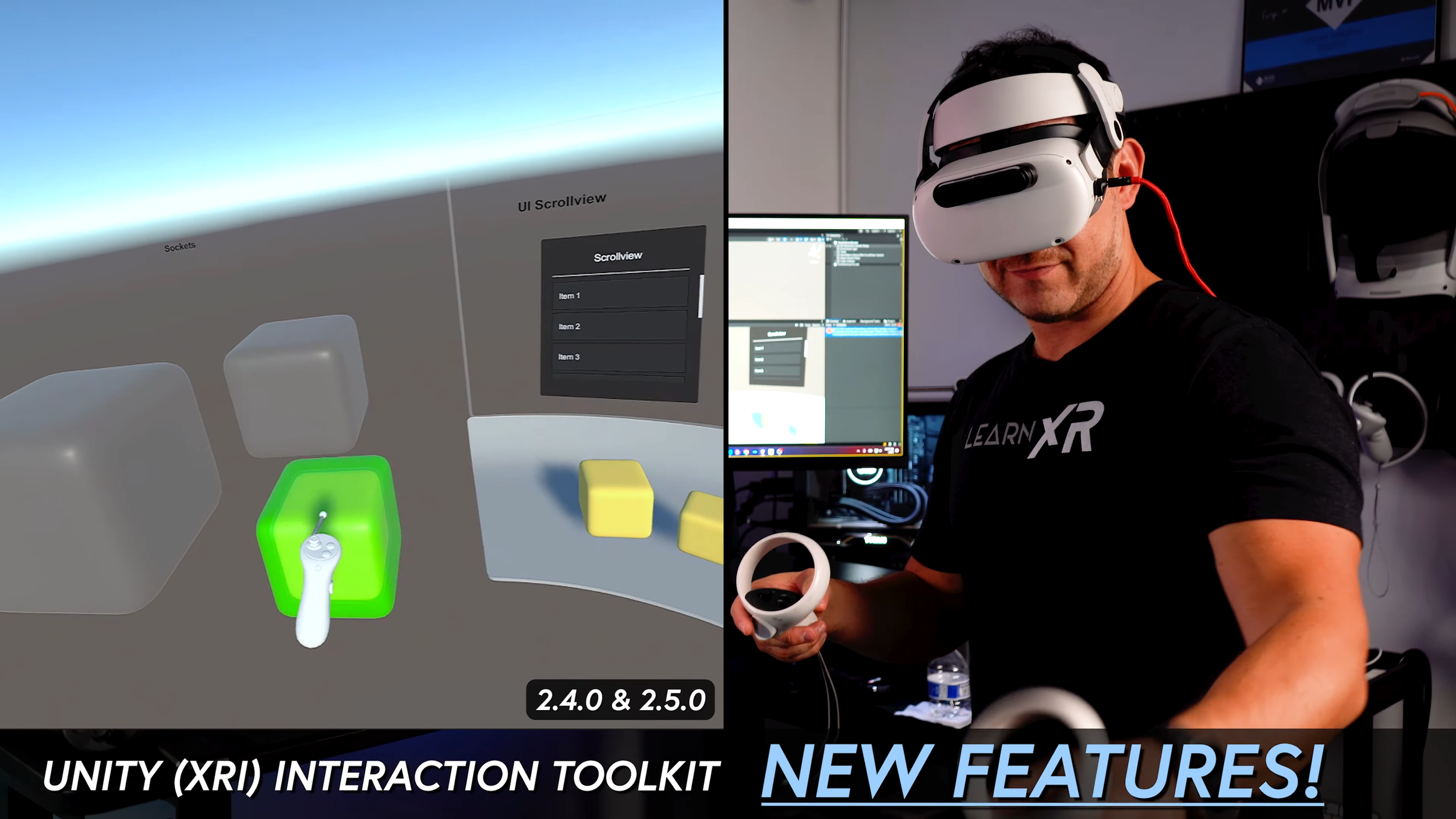Unity Interaction Toolkit 2.4.0 & 2.5.0 Versions Are Here - New Big Improvements!
What’s going on everyone and welcome!
In today's post and video, I'd like to share my excitement and knowledge after reviewing Unity XRI 2.4.0 and Unity XRI 2.5.0, which are now available and both provide new and updated super helpful features to VR/AR developers. Let me give you a sneak peek of the top 5 coolest features before we dive into the details.
XR Interactor Line Visual was updated to bend selected objects by default which helps with making object selection a lot more natural for users.
New XR Transform Stabilizer component was added to remove pose jitter and also makes it more intuative when users deal with rays during object hovering and selection.
XR Input Modality Manager was added and it handles toggling between hands and controller based on which one is active or not
New Climb Locomotion Provider is now AVAILABLE including a demo which should help with creation of ladders, monkey bars, climbing walls, etc
Last one worthy of an early mention is XR Gaze and Aim Assistance. This one is very very cool and I am excited to show you more about how rays and eye tracking can enhance your experiences.
Images below show some of the features covered with today’s post.
Next, I will give you an detailed view of all the changes and additions for both 2.5.0 and 2.4.0.
Features Available with Unity XRI 2.5.0
AR Interaction Refactor
XR Screen Space Controller: This new addition leverages screen space gesture data to define select states and utilizes the XRRayInteractor for object translation and rotation. It's a game-changer for creating more intuitive AR interactions.
TouchscreenGestureInputController: This input system controller provides valuable gesture data for use in input action maps, enhancing touch-based interactions.
ARTransformer: Easily enhance your XR Grab Interactables with awareness of AR planes in the scene, making mixed reality experiences smoother. You can also use XR Origin prefabs combined with AR Transformer for Mixed Reality applications.
Mobile AR Solution: A dedicated AR Starter Assets sample is available for those focusing on mobile AR development. These new classes replace the ARGestureInteractor and translate, rotate, and scale interactables, offering a more streamlined approach.
More Ray-based Interaction Stabilization
Cone Casting: The XR Ray Interactor now offers a cone casting hit detection type. It creates a cone-shaped ray, making it easier to interact with objects from a distance. This feature is especially handy when combined with the gaze interactor, providing meaningful interactions for eye tracking and head rotation scenarios.
Ray Endpoint Stabilization: Building on the improvements from XRI 2.4.0, XR Transform Stabilizer now includes ray endpoint stabilization. This minimizes ray jitter significantly, ensuring a smoother user experience while maintaining performance, particularly on all-in-one XR devices.
XR Socket Interactor Auto Scaling and Snapping
Snapping and Scaling: The XR Socket Interactor has received an upgrade, introducing snapping and scaling interactions. Now, interactable objects can snap into sockets when they reach a certain hover threshold. Furthermore, objects can be scaled to fit within the socket's constraints. This feature is a game-changer for creating intricate interactions, such as 3D inventory systems.
Features Available with Unity XRI 2.4.0
XR Ray Stabilization and Visual Improvements
The XR Interactor Line Visual now bends to selected interactables by default, enhancing the natural feel of interactions.
Performance gets a boost with optimized line computation math for the Burst compiler (requires the Burst package).
Introducing ray stabilization using the XR Transform Stabilizer component, reducing pose jitter for precise aiming.
XR Gaze and Aim Assistance
Building on XRI 2.3's gaze interaction, XR Gaze Assistance lets controllers switch to eye-gaze aiming when off-screen or pointing off-screen.
An aim-assist feature adjusts object trajectories, helping them hit targets gazed at by the user.
Hand Interaction Additions & Updates
XR Input Modality Manager: Seamlessly switch between hands and controllers at runtime based on tracking status.
Reactive Hand Visuals: Hands Interaction Demo now features interaction-reactive visuals that respond to finger strength.
Hand Tracking for Device Simulator: The XR Device Simulator now supports hand tracking, facilitating testing of hand-based interactions from within the editor.
Climb Locomotion Provider: Introducing climbing mechanics, enabling users to grab and move along climbable objects in any direction.
Interaction Focus State
Interactables now have a "Focus State" when selected, helping highlight objects for specific operations, like size or color adjustments in a separate UI panel.
Changes and Fixes
XR Interaction Toolkit settings are now located under XR Plug-in Management.
Migrating from older versions? The interaction layer popup box no longer appears automatically. Manually initiate the migration via Project Settings > XR Plug-in Management > XR Interaction Toolkit.
Overall, both versions bring some pretty incredible features. With significant improvements like HUGE Ray Stabilization and added optimizations through the Burst Compiler, these XRI interactions feel way more natural and intuitive. Personally, I can't wait to see how much more will be added in future versions, but these updates really take XRI to a completely new level.
Dilmer








